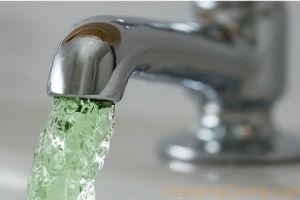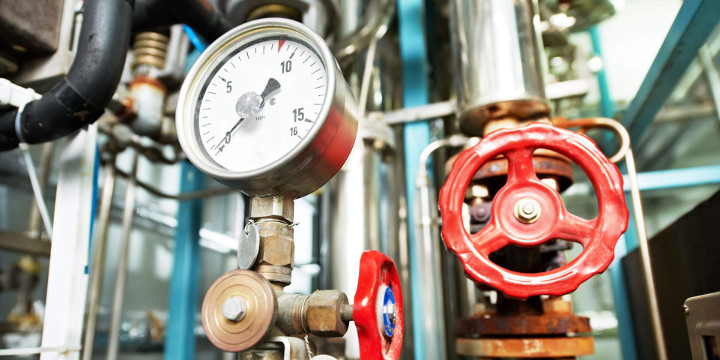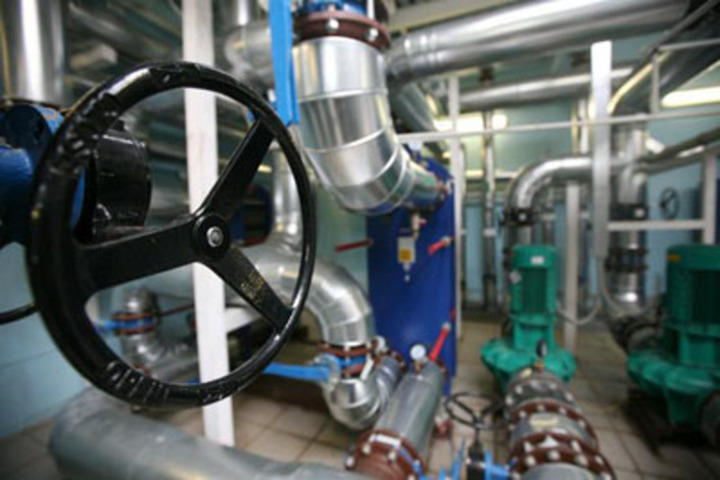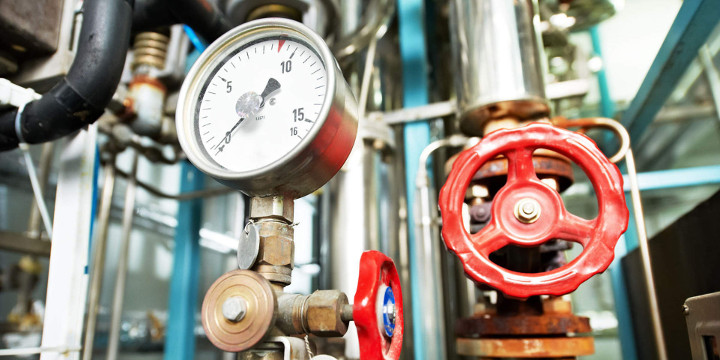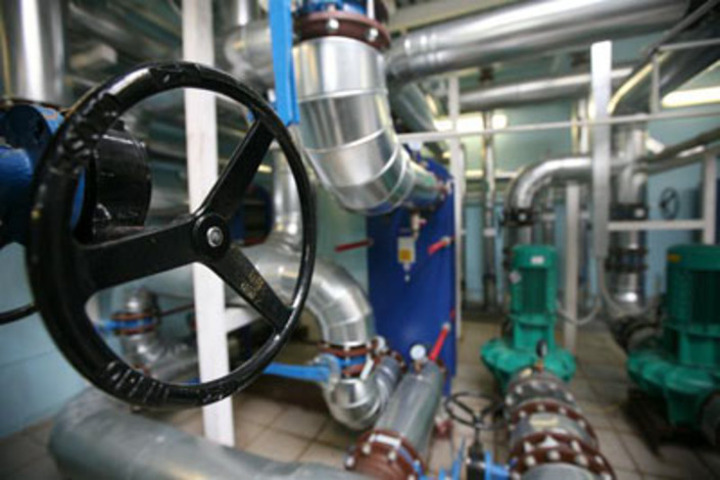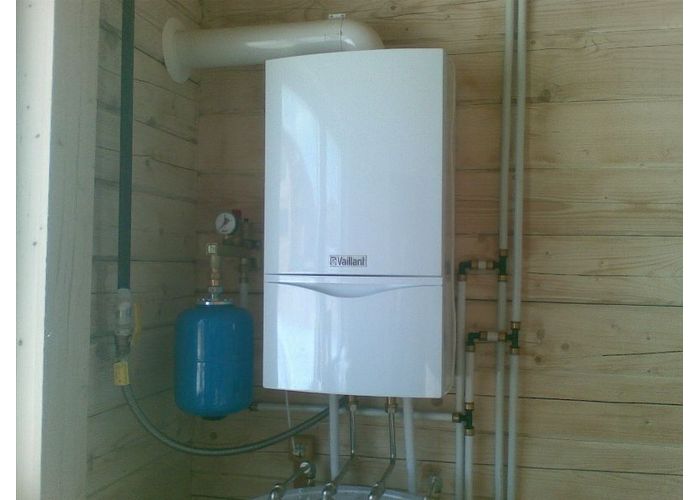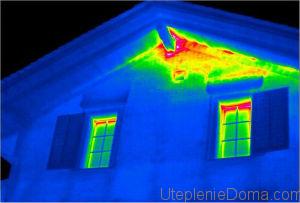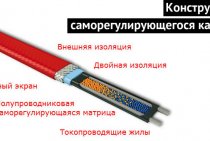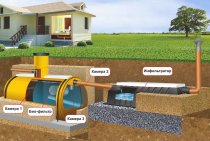Preparing for the heating period.
Resource supply of housing and communal services > Heat supply > Order 115 of the Ministry of Energy of the Russian Federation
RULES OF TECHNICAL OPERATION OF THERMAL POWER PLANTS
11. Preparation for the heating season
11.1. In preparation for the heating season, in order to ensure the reliability of heat supply to consumers, it is necessary to carry out a set of measures within the established time frame, the main of which are:
11.2. In preparation for the upcoming heating period, defects in equipment operation and deviations from hydraulic and thermal regimes are identified, work plans are drawn up, and the necessary technical documentation and material and technical resources are prepared. Schedules for the preparation of heat sources, heat networks and heat consumption systems for the upcoming heating period are developed before the end of the current heating period, but no later than May of the current year. 11.3. To ensure reliable and safe operation of heat supply systems, timely elimination of accidents and prevention of their development in organizations, trainings are held on the interaction of personnel in the elimination of emergency situations, organizational and technical measures (instructions) have been developed. 11.4. Prior to the start of the heating period, heat supply organizations develop and approve in local governments schedules for limiting the supply of heat energy and heat carrier in case of taking urgent measures to prevent or eliminate accidents in the heat supply system. 11.5. To check the readiness for the heating season, upon acceptance of heat points, the following is checked and drawn up by acts:
11.6. To check the readiness of heating systems and the heat supply system as a whole for operation in the heating period, trial furnaces are carried out before it begins. Trial fireboxes are carried out after completion of work on preparing the heat supply system for the autumn-winter period. The start and duration of test fires are determined by the schedule of the heat supply organization, which should be agreed with the local government and brought to the attention of consumers no later than three days before the start of the test fire. 11.7. The heating period begins if the average daily temperature of the outside air is +8 degrees for five days. C and below, and ends if within five days the average daily temperature of the outside air is +8 degrees. C and above. Turning on and off of heat consumption systems is carried out according to a schedule agreed with the energy supply organization. 11.8. At the end of the heating season or during a shutdown, the hot water boilers and auxiliary equipment of the boiler house are preserved. The conservation methods are selected by a specialized commissioning organization, based on local conditions, based on the recommendations of the current guidelines for the conservation of heat and power equipment, and are included in the conservation instructions approved by the organization's technical manager. When hot water boilers are put into operation, as well as before the start of the heating season, heating networks and internal heat consumption systems are pre-washed. 11.9. Energy supply organizations with heat sources ensure the creation of standard fuel reserves in a timely manner.
__________________________________________
Cleaning the heating system before the heating season
The first thing to do is flush the heating system from the inside. This stage of preparation for the heating season is very important. Inside, scale and other contaminants settle on pipes and batteries. As a result, the wall thickness increases and the thermal conductivity decreases. Accordingly, the heating circuit begins to work worse, energy costs increase.
Professional Booster.
There are many flushing options, but chemical cleaning is the most popular among owners of autonomous heating systems. The method does not involve the use of special expensive equipment. You only need, which you can easily do with your own hands. The principle of flushing is that an acid solution is driven through the circuit for several hours.
Acid corrodes not only scale, but also rust, and can sometimes damage paranitic or rubber gaskets. It happens that after cleaning with a chemical method, leaks appear. This is good, as the weaknesses were identified even before the start of the heating season and there is enough time for repairs.
You probably could see how the contours from steel pipes and cast-iron batteries are painted over the old layer. Over time, the metal becomes overgrown with such a layer of paint that the thermal conductivity is significantly reduced.
Replacing the coolant before the heating season
The next step in preparing the heating system for the heating season is the replacement of the coolant. If, after flushing the heating system, no leaks and faulty elements were detected, then the circuit can be filled with coolant and it is ready for operation. It is necessary to change the fluid in the heating system, even if cleaning has not been carried out. Experts recommend pouring distilled water or non-freezing liquid into the circuit.
If you have a double-circuit boiler, do not use antifreeze.
The anti-freeze has its own service life, after which the liquid begins to decompose into components. The most dangerous component in this case is hydrochloric acid. It turns out that if you do not change the antifreeze, then acid will circulate along the circuit, which will quickly destroy all elements of the system. The resource of antifreeze liquid is indicated on the packaging.
You can fill the heating system:
- using a pressure pump;
- by feeding from the water supply;
- you can even fill the coolant with a bucket.
If the coolant has a minimum iron content, and the pH is close to optimal, then the equipment (boiler, pump, radiators) will last much longer. Requirements for the quality of the coolant are indicated in the product passport.
Beginning of work
The Russian Federation includes many subjects located in a variety of climatic conditions. Depending on the specific region, the heating period of 2017-2018 will be launched at different times. In addition, experts take into account seasonal features, since weather conditions even in one region can vary greatly from year to year.
The same applies to preparatory work, since their timing is directly dependent on the launch of heating systems. However, certain time frames are legally established in which all work must fit:
- 10th of March. Before this date, test work on hydraulic testing of heat exchange systems should be started;
- March 12th. The start of testing of thermal mains and heating stations is scheduled for this date;
- May 25th. By this date, all repair and other preparatory work must be completed;
- October 15th. The last day when it is allowed to start heating houses and social infrastructure buildings. In exceptional cases, for individual premises, this period may be extended by two weeks.
However, the heating season may be opened earlier than the deadline, if the weather conditions require it. The following rule is legally established: if the average daily temperature for 5 days is kept at +8 degrees Celsius and below, then heating must be started immediately, regardless of the date. This measure is due not only to the issue of ensuring a comfortable temperature in dwellings and other premises, but also to logistical needs.If heat supply systems are not put into operation at such a temperature, then they may be damaged in the future under the influence of cold weather, which entails significant financial costs.
However, the deadline for launching the operation of thermal mains remains unchanged - this is October 15, 2017. The heating season will last until spring 2018. The specific date of turning off the heating also depends on weather conditions. Scheduled work to turn off the heating systems will begin in April and may last the entire month.
Beginning of work
The Russian Federation includes many subjects located in a variety of climatic conditions. Depending on the specific region, the heating period of 2017-2018 will be launched at different times. In addition, experts take into account seasonal features, since weather conditions even in one region can vary greatly from year to year.
The same applies to preparatory work, since their timing is directly dependent on the launch of heating systems. However, certain time frames are legally established in which all work must fit:
- 10th of March. Before this date, test work on hydraulic testing of heat exchange systems should be started;
- March 12th. The start of testing of thermal mains and heating stations is scheduled for this date;
- May 25th. By this date, all repair and other preparatory work must be completed;
- October 15th. The last day when it is allowed to start heating houses and social infrastructure buildings. In exceptional cases, for individual premises, this period may be extended by two weeks.
However, the heating season may be opened earlier than the deadline, if the weather conditions require it. The following rule is legally established: if the average daily temperature for 5 days is kept at +8 degrees Celsius and below, then heating must be started immediately, regardless of the date. This measure is due not only to the issue of ensuring a comfortable temperature in dwellings and other premises, but also to logistical needs. If heat supply systems are not put into operation at such a temperature, then they may be damaged in the future under the influence of cold weather, which entails significant financial costs.
However, the deadline for launching the operation of thermal mains remains unchanged - this is October 15, 2017. The heating season will last until spring 2018. The specific date of turning off the heating also depends on weather conditions. Scheduled work to turn off the heating systems will begin in April and may last the entire month.
Step 3. Preparing the house for future heat supply.
Preparatory work in the houses is carried out in accordance with:
- Order of the Ministry of Energy No. 103 on preparation for the heating season dated March 12, 2013, as well as a list of necessary measures specified in Rules No. 170;
- the results of the inspection carried out in the spring;
- schedule;
- instructions from the State Housing Inspectorate and notifications from the heat supply organization about the need to perform certain work;
- decisions of general house meetings concerning repair work with common property.
Local authorities, taking into account the plan-schedule transferred to them, decide when the preparatory work should begin and end. There are clearly defined deadlines for completion of training:
- south of the country - October 1;
- center - September 15;
- east and north - 1 September.
The work is carried out under the control of local authorities, housing inspectors, apartment owners, building councils and association boards.
Preparing your heating system for winter step by step
There is no life without heating. It is very unpleasant to be left without heating in winter or on the eve of frost to understand that the house is warming up in parts or the radiators are “slightly warm”. Preparing the heating system for the winter, which must be done strictly step by step, will help to avoid the problem.
Heating system preparation steps
The first step should be to check the tightness of the heating circuit. To do this, fill the heating system with water. Filling is done through the drain valve, it is the lowest in the system. Bottom filling with water allows air to be expelled from the system.
The filling of the system is carried out completely, and the air release is controlled by air vents.
We leave the filled system for 1-2 hours. This time is enough to bypass the entire heating system and check for the absence or presence of leaks in the system.
We pay special attention to the connection points of heating devices, pipe connections and all kinds of threaded connections.
We pay special attention to the readings of the manometer. If you do not see leaks, but the pressure of the pressure gauge drops, then we continue to look for leaks
Found leaks are noted for elimination.
If possible, fix leaks immediately. If the leak is serious, then we fix it after draining the water and re-check the system for leaks.
After eliminating leaks, if any, of course, we proceed to the next step of verification - pressure testing. Pressure testing is the same test of the heating system, but under pressure, 1.5 atm. We complete the pressure testing with a control start-up of the heating boiler.
Important! Depending on the type of boiler, starting the boiler also requires some checks. The boiler is checked according to the boiler operating instructions.
So for a gas boiler, you need to carefully check the gas pipeline and the inlet, gas fitting.
After starting the heating boiler, we proceed to the next step, we check the heating radiators. We go through all the radiators and feel each section of the radiator. If we find that the radiator section is not warmed up, then we lower the temperature in the system, poison the air to eliminate air pockets and check the system again. If we find that sections of individual radiators do not warm up well, then these radiators should be noted and washed after draining the water.
When all checks are certified, it remains to flush the entire system under pressure with clean water.
The preparation of the heating system for winter is completed by filling the proven system with the coolant used (water or antifreeze).
Obotoplenii.ru
Other articles in the section: Heating installation
-
Pumps of heating systems: types and methods of installation of heating circulation pumps
-
About the heating system: components of the heating system
-
Tools for heating installation
-
About home heating: professionals about the installation of heating systems
-
10 answers to the practical use of antifreeze in heating systems
Act of readiness of heating systems and heat networks sample
The act of readiness of heating systems and heating networks of the consumer for operation in the heating period of 2014-2015.
Settlement "____" _____________20___ We, the undersigned, the EDMTO Perm Department represented by (position, full name) have accepted the heating networks of the building and heat networks
The test and inspection results are as follows:
1. During the hydraulic test, the pressure was raised to the gf/cm2 required by the instructions. In this case: a) after 15 minutes. After turning off the press, the needle dropped to ____ gf/cm2. b) the specific point of water per 1 m3 of volume did not exceed __________ t / h, m3.
2. When inspecting the system, the following defects: a) in the insulation of buildings b) in insulation c) in instruments d) in cranes
3. The condition of the hatches on the consumer's external networks
4. Flushing the network and system
The consumer is obliged to eliminate the defects established by this act of readiness of heating systems and heat networks by
Subject to the elimination of the above defects, the system can be allowed to be connected to the heating network of a heat supply organization
Defects are eliminated, the subscriber's system is filled and is considered accepted from "______" ________________ 20_____.
Representative of the heat supply organization ________________ Representative of the consumer ________________ "______" _______________20____.
Incoming search terms:
- act on the technical readiness of heating networks and power receiving devices of installations (24)
- flushing of heating networks before the start of the heating season form of act (1)
- act on preparation for the heating season form (1)
- act on preparation for the heating season (1)
- act of readiness for the heating season sample (1)
- act of readiness for the heating season form (1)
- act of readiness of the heating system for the heating season sample (1)
- act of readiness of the heating system and heating networks of the consumer for operation in the heating period 2017-2018 (1)
- act of readiness of the facility for the heating season sample (1)
- the act of readiness of the facility for the heating season (1)
A selection of the most important documents on request Heating season (legal acts, forms, articles, expert advice and much more).
Regulations : Heating season
Decree Government of the Russian Federation from 05/06/2011 N 354 (as amended on 06/27/2017) "On the provision of utility services to owners and users of premises in apartment buildings and residential buildings" (together with the "Rules for the provision of utility services to owners and users of premises in apartment buildings and residential buildings") 5 If thermal energy for the needs of space heating is supplied to in-house engineering systems through centralized networks of engineering and technical support, then the contractor starts and ends the heating period within the time limits established by the authorized body. The heating period must begin no later than and end no earlier than the day following the day of the end of the 5-day period, during which, respectively, the average daily outdoor temperature is below 8 degrees Celsius or the average daily outdoor temperature is above 8 degrees Celsius.
Articles, comments, answers to questions : Heating season
Facts of the case: During the heating season, an accident occurred on the heating main. It was possible to turn off the heat supply for no more than three hours. In this regard, the customer entered into a contract to eliminate the consequences of this accident with a single contractor. There was no competitive procurement procedure. The antimonopoly body recognized the actions of the customer as unlawful.
The conclusion is based on the fact that in an emergency situation related to the supply of heat to the house during the heating season, the employee was obliged to provide access to her apartment for repair work. Her absence from the workplace was due to good reasons.
The document is available: in the commercial version ConsultantPlus
Forms of documents : Heating season
Form: The act of checking the readiness for the heating period of municipalities (heat supply and heat network organizations, consumers of thermal energy, whose heat-consuming installations are connected to the heat supply system) (recommended sample)
The document is available: in the commercial version ConsultantPlus
Form: Passport of readiness for the heating season of the municipality, heat supply organization, heat network organization, consumer of heat energy, in respect of which the readiness for the heating season was checked (recommended sample) (Order of the Ministry of Energy of Russia dated 12.03.2013 N 103)
The document is available: in the commercial version ConsultantPlus
The article was written based on materials from sites: pandia.ru, dogovor-obrazets.ru, domvpavlino.ru.
Preparing the heating system for the winter season
When creating any type of individual heating, first of all, it is necessary to comply with fire safety rules. This is especially true for houses with stove heating. Your actions:
- Check the chimney and stove for damage. If necessary, correct the masonry, replace the grate and cover the cracks with clay mortar.
- Be sure to clean the chimney of accumulated soot.
- Check the contact of the chimney with the elements of the roofing system. The wooden structure should not fit snugly against the chimney.
- Whitewash the repaired structure and heat the stove. If not all cracks are sealed, you will immediately see.
- Move furniture away from the stove at least one meter away.
- Cover the flooring near the firebox and ash pan with a sheet of iron or tile.
- Check the operation of the damper on the chimney and the integrity of the hob, if any.
- Move the wires of the electrical system, sockets and switches located near the stove to another place.
- To store firewood and coal, allocate a separate dry room. Calculate the fuel supply in advance so that it is enough for the season.
- Protect your family from possible carbon monoxide poisoning by installing a simple gas detector.
The rules for preparing and conducting the heating season in a private house using electric heating also need to be known and observed:
- First of all, carefully inspect the cables and replace if necessary. Do not use wires with broken insulation - this is a direct path to spontaneous combustion.
- Call a professional to service your home's electric heaters.
- In order not to be left without heat during natural disasters and possible damage to the power line, take care of an alternative way to heat your home. It can be a gas boiler independent of the energy carrier, a wood-burning stove or a fireplace.
If you use a gas boiler for the home, preparation for the heating season will also be needed. Your actions:
- Call a specialist from the gas service to carry out a technical inspection of the equipment.
- Check the operation of the ventilation ducts in the room where the equipment is located.
- Check the heating system for filling with water. If necessary, add water so that all batteries and pipes warm up evenly.
- Check the operation of the locking devices on the heating system.
- Pipes passing outside the house and inside, paint with paint.
Get Started Now
- Check all windows. Put plastic structures in winter use mode. Replace worn seals.
- Entrance doors also need to be insulated. Metal structures do not retain heat in the house if there is no insulation.
- On the plastered exterior walls, stick foam sheets and apply a new layer of plaster.
- The attic is insulated in a variety of ways. The easiest is to smear the base of the attic with a mixture of clay and straw. If the room is non-residential, lay mineral wool. For the attic room, use penoizol. There are many ways. Choose the best one for you.
- Install foil screens behind the batteries to help keep the house warm.
Now your house is prepared for the winter, and financial energy costs will be significantly reduced. You will find not only comfort and warmth in cold weather, but also saving the family budget if, after reading the article, follow all our recommendations.
Russia is one of the most difficult climatic countries. Many regions of the country experience a long frosty winter every year.
That is why, since Soviet times, special attention has been paid to preparatory work. Preparations for the heating season 2017-2018 of heat supply facilities began this spring
Its effectiveness will determine when and to what extent Russian cities will receive heat in autumn.
It is difficult to overestimate the role of preparing energy facilities for winter, given that most of the houses, schools, hospitals and buildings of other social institutions of the country are heated from the district heating system. The same applies to industrial enterprises. To control the process of preparation for the heating season, the department of fuel and energy economy was formed. It is he who establishes the program of preparatory measures on which the heating season 2017-2018 depends in Moscow and the regions of the country.
The larger the subject (city, settlement), the more extensive work is needed to prepare it for the autumn-winter period. This is due to the total number of houses and buildings.
The existing program for the preparation of settlements for the heating season includes a clearly defined sequence of activities that are ordered to be carried out by the executive authorities.
The main points of this program are:
- Formation within the relevant executive state bodies of commissions for preparation for the heating season. The main task of such commissions is to monitor the timing and scope of all preparatory activities;
- Formation of a schedule of upcoming work, including procedures for the control launch of heating systems. Such launches make it possible to identify all existing problems in heat supply systems, identify emergency areas;
- Based on the results of the test launches, a general estimate is formed, which includes the costs of all upcoming work.
In other words, preparation for the heating period 2017-2018 consists of checking existing systems and heat supply lines in order to identify emergency areas. Carrying out timely repairs and replacing obsolete equipment guarantees a stable supply of heat in the autumn-winter period to all houses and buildings of social infrastructure.
Minimize heat loss before the heating season
You can check the house for heat loss using a thermal imager - this is a device that shows a picture in the infrared spectrum. Ideally, the check should be done in winter, and heat losses should be eliminated already before the heating season begins.
Infrared shot of a house.
Ideally, on the screen of the thermal imager, the house should be blue - this means that it is cold outside, respectively, the heat does not leave the room. All places where heat escapes will be marked in red or yellow. The brighter and richer the color, the higher the heat loss. The main points of heat leakage are windows and doors. Therefore, the replacement or at least sealing of windows and doors is carried out in the first place.
After all the cracks have been eliminated, the windows have been replaced and you can proceed to the thermal insulation of the enclosing structures:
- walls;
- ceiling;
- foundation.
When the heating season ends, the heater continues to work. Only now he does not let heat from the street into the room, so in summer it is cooler in such a house. Energy efficient houses are very popular today.
Start preparing your home for the heating season
Heat supply organizations and management companies begin preparations for the heating season immediately after its completion. They wash and pressurize networks. Conducting tests. Check and, if necessary, change valves, pressure gauges, pipes and metering devices.
It is necessary to rinse and crimp the nets in order to clean them of salts and rust. Without this, a lot of resource is spent on heating, and there is little benefit. Hydraulic testing checks networks for strength and detects leaks. The management company and owners eliminate them in the summer.
A complete list of requirements is contained in the Order on preparation for the heating season of the Ministry of Energy of the Russian Federation No. 103 dated March 12, 2013. It specifies the requirements for heat supply organizations and consumers.
Heating quality
The main criterion for the quality of heating is the air temperature in the apartment. It depends on the air temperature in the street and the temperature of the water in the heating networks. According to the Decree on the preparation for the heating season No. 354, the temperature should be above 18 ° C.
To save resources and maintain a comfortable temperature in the apartment, heat supply organizations regulate the temperature of the water in the networks. If this is not done, the house will be cold in the cold, and hot in the thaw.
The main networks of a heat supply organization lose heat due to slagged pipes, leaks, worn-out thermal insulation and outdated regulators.At the same time, the water temperature and pressure drops, and the heating fee is calculated according to the amount of the sent resource. The situation is similar with intra-house networks. A common house heat meter helps to identify losses and reduce heating fees.
